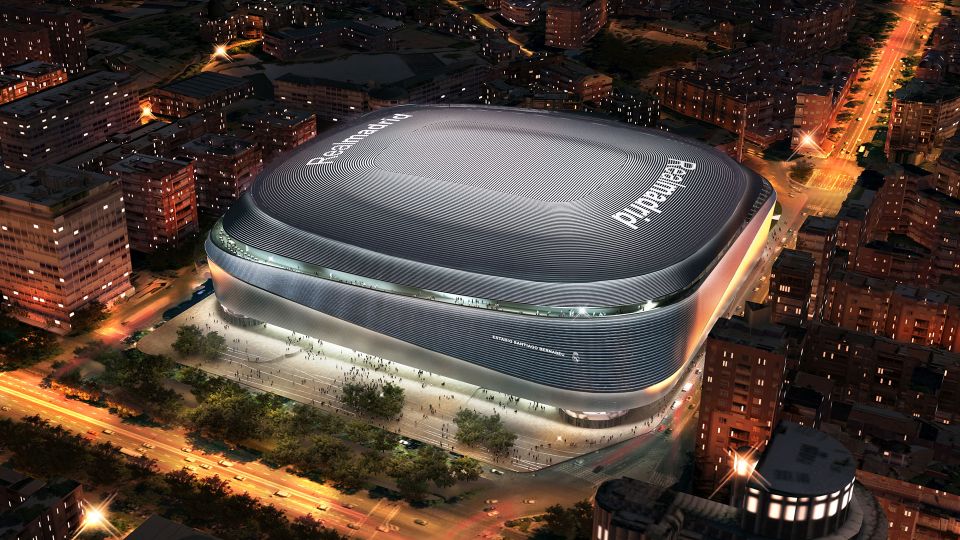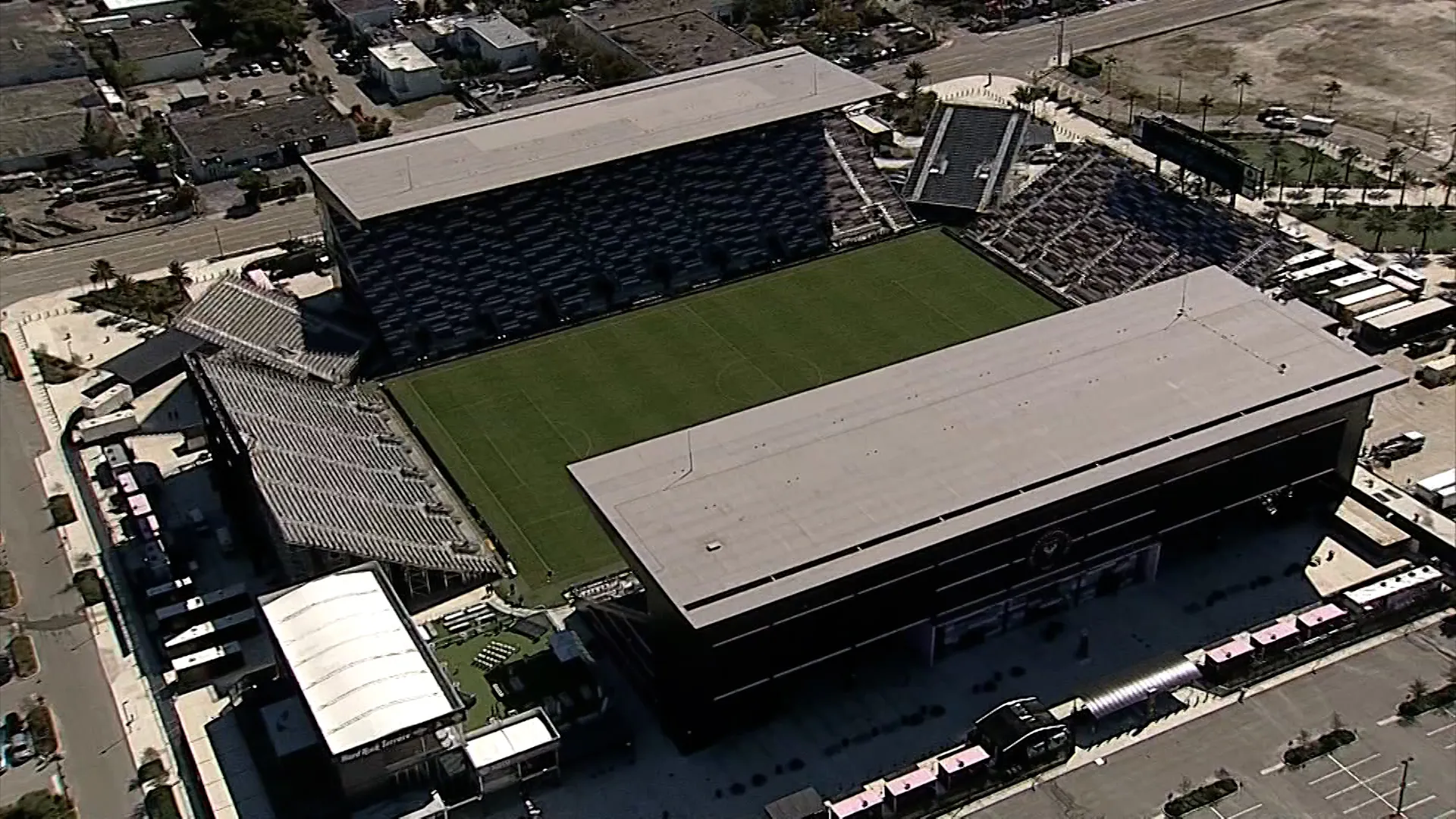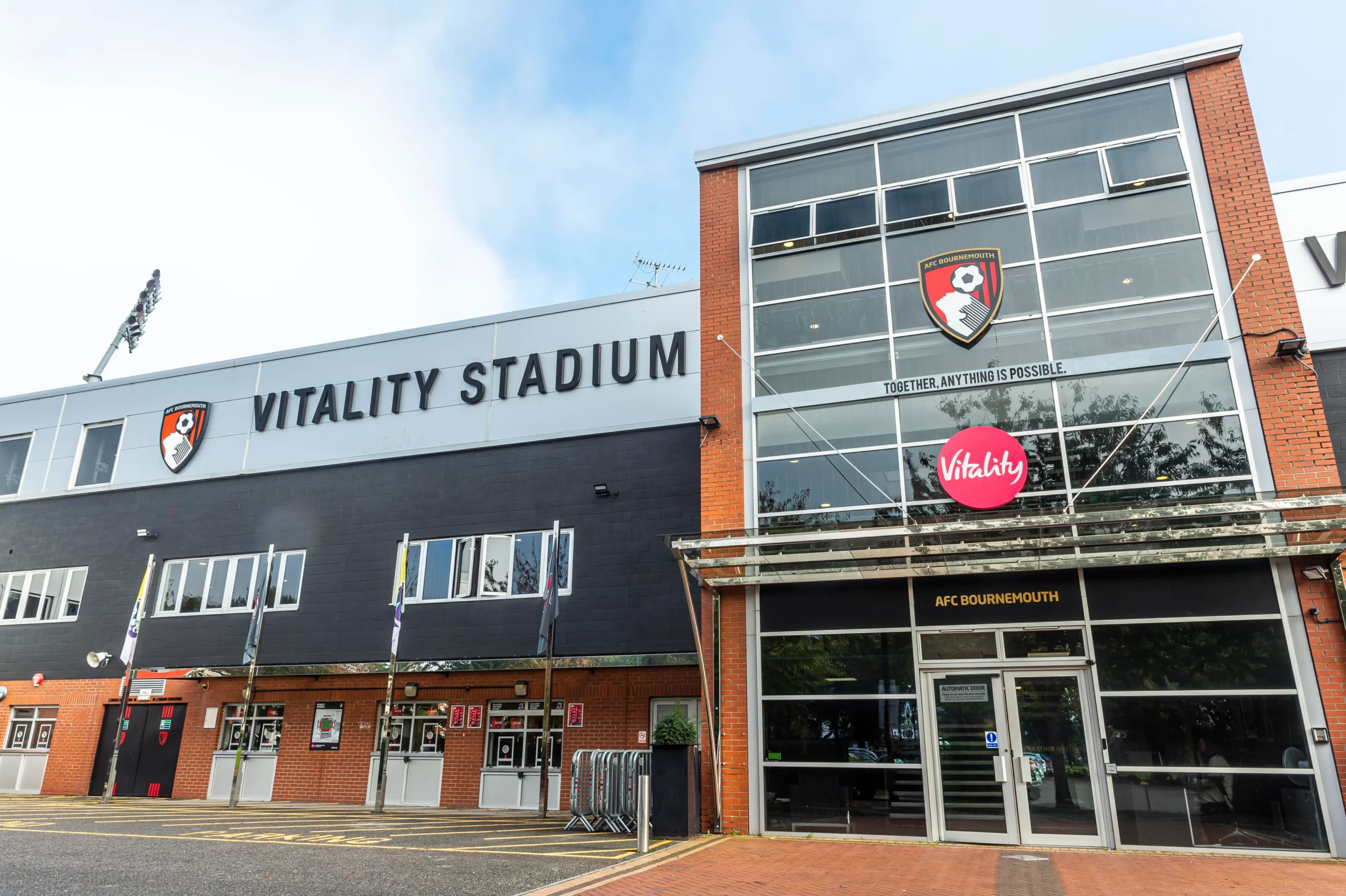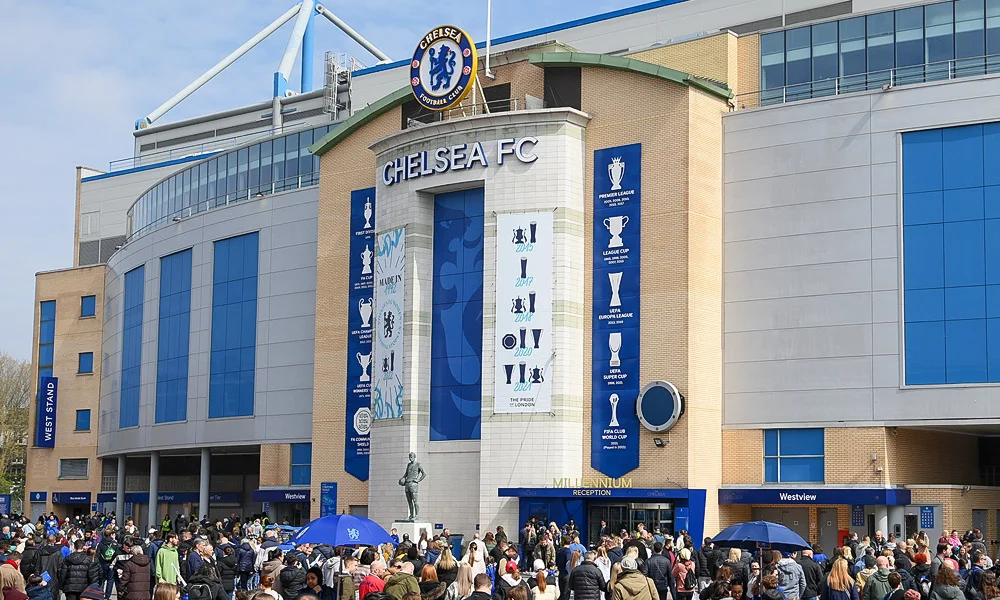Santiago Bernabéu is a name that resonates with football fans worldwide. It is the name of the stadium that has been the home of Real Madrid since 1947, and has witnessed some of the most iconic moments in the history of football. The stadium has undergone several renovations over the years, but it has retained its charm and has become a symbol of Real Madrid’s legacy.
The Santiago Bernabéu stadium has a rich history, and it is named after one of the most influential figures in the history of Real Madrid, Santiago Bernabéu. Bernabéu was a player, coach, and president of Real Madrid, and he played a significant role in transforming the club into the global powerhouse it is today. The stadium has become a shrine for Real Madrid fans, who flock to the stadium to witness their team play and to pay homage to their heroes.
The Santiago Bernabéu stadium has been witness to some of the most memorable moments in the history of football. From the legendary performances of Alfredo Di Stefano and Ferenc Puskas to the Galácticos era, the stadium has been the stage for some of the most brilliant displays of football. The stadium has also hosted several high-profile matches, including the 1982 World Cup final. The Santiago Bernabéu stadium is not just a football stadium; it is a cultural icon that has become an integral part of the city of Madrid.
Key Takeaways
- Santiago Bernabéu is the home of Real Madrid and has become a symbol of the club’s legacy.
- The stadium is named after Santiago Bernabéu, one of the most influential figures in the history of Real Madrid.
- The Santiago Bernabéu stadium has been witness to some of the most memorable moments in the history of football.
Historical Genesis of Santiago Bernabéu
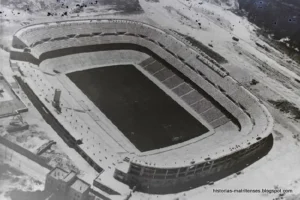
Santiago Bernabéu Stadium, also known as Estadio Santiago Bernabéu, is a football stadium located in Madrid, Spain. It is the home stadium of Real Madrid, one of the most successful and popular football clubs in the world. The stadium is named after Santiago Bernabéu, who was the president of Real Madrid from 1943 until his death in 1978.
Construction and Inauguration
The construction of Santiago Bernabéu Stadium started in 1944 and was completed in 1947. It was built to replace Real Madrid’s former stadium, Estadio Chamartín, which had become too small for the growing number of fans. The new stadium was designed by the architect Manuel Muñoz Monasterio, who also designed the Metropolitano Stadium in Madrid, the former home of Atlético Madrid.
The stadium was inaugurated on December 14, 1947, with a friendly match between Real Madrid and Portuguese club Os Belenenses. The match ended in a 3-1 victory for Real Madrid, with Sabino Barinaga scoring the first goal in the history of the stadium.
Evolution of the Stadium
Over the years, Santiago Bernabéu Stadium has undergone several renovations and expansions to increase its capacity and improve its facilities. The first major renovation was carried out in 1954, which included the installation of floodlights and the construction of a new stand. In 1982, the stadium hosted the FIFA World Cup final, which required further renovations such as the construction of a new roof.
In 1998, the stadium underwent a major renovation that included the construction of new stands, the installation of VIP boxes, and the expansion of the capacity to over 80,000 seats. The latest renovation took place between 2019 and 2020, which included the installation of a retractable roof, the renovation of the VIP boxes, and the expansion of the commercial and entertainment areas.
Today, Santiago Bernabéu Stadium is not only a football stadium but also a symbol of Real Madrid’s rich history and success. It has hosted numerous important matches and events, including the UEFA Champions League final, the Copa del Rey final, and the Spanish national team matches.
Architectural Marvels and Innovations
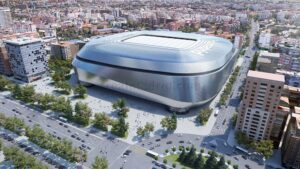
Real Madrid’s Santiago Bernabéu Stadium is a masterpiece of modern architecture that has undergone several transformations and renovations since its establishment in 1947. The stadium has a seating capacity of over 85,000, making it the second-largest stadium in Spain. It is an imposing structure situated in the Chamartín district of Madrid, with excellent accessibility by public transport.
Design and Capacity
The Santiago Bernabéu Stadium’s design is a testament to the innovative and visionary spirit of its namesake, Santiago Bernabéu. The stadium’s original design was by the architect José María Castell, with subsequent renovations and expansions carried out by other architects such as Rafael Luis Alemany and Antonio Lamela. The stadium has undergone several structural changes over the years, including the installation of a retractable roof, the addition of a new façade, and the construction of a new seating area.
The stadium’s seating capacity has increased over the years, from its original capacity of 75,000 to over 85,000 today. The stadium’s seating arrangement is designed to provide an unobstructed view of the pitch from every seat, ensuring an excellent spectator experience. The stadium’s design also includes several VIP boxes and lounges, providing premium seating and hospitality services to fans.
Modernization and Technological Advancements
In recent years, the Santiago Bernabéu Stadium has undergone a significant modernization and technological overhaul. The stadium’s owners, Real Madrid, have invested heavily in upgrading the stadium’s facilities to provide a world-class experience to fans. Some of the technological advancements include the installation of a state-of-the-art video scoreboard, high-speed Wi-Fi, and a mobile app that provides fans with real-time information about the stadium and the game.
The stadium’s modernization also includes the implementation of sustainable and eco-friendly initiatives, such as the installation of solar panels and the use of rainwater harvesting systems. These initiatives have helped reduce the stadium’s carbon footprint and promote a more sustainable future.
In conclusion, the Santiago Bernabéu Stadium is a marvel of modern architecture, a testament to the visionary spirit of its namesake, and a symbol of Real Madrid’s footballing excellence. Its innovative design, seating capacity, and technological advancements make it one of the most iconic stadiums in the world, and a must-visit destination for football fans.
Memorable Moments at the Bernabéu

The Santiago Bernabéu Stadium has been the home of Real Madrid since its inauguration in 1947. Over the years, it has hosted numerous memorable moments in the history of football. Here are some of the most iconic matches and historical achievements that have taken place at the Bernabéu.
Iconic Matches
One of the most memorable matches ever played at the Bernabéu was the European Cup final in 1957. Real Madrid faced off against Fiorentina in front of a crowd of 124,000 spectators. The match ended in a 2-0 victory for Real Madrid, with goals from Di Stéfano and Gento. This was the first of five consecutive European Cup victories for Real Madrid, a feat that has never been matched.
Another unforgettable match was the 6-1 victory over Barcelona in 1950. This was the first time that Real Madrid had beaten their arch-rivals by such a large margin. The match is still remembered today as one of the greatest victories in the history of the El Clásico rivalry.
Historical Achievements
The Santiago Bernabéu Stadium has witnessed many historical achievements by Real Madrid over the years. One of the most significant was the club’s 100th European Cup victory, which came in the 2017-18 season. Real Madrid defeated Liverpool 3-1 in the final, with goals from Benzema, Bale, and a memorable overhead kick from Ronaldo.
Another historical achievement was the club’s 33rd La Liga title in the 2016-17 season. Real Madrid clinched the title with a 2-0 victory over Málaga at the Bernabéu. This was the first time that Real Madrid had won back-to-back La Liga titles in over a decade.
Overall, the Santiago Bernabéu Stadium has been the stage for many unforgettable moments in the history of football. From iconic matches to historical achievements, the Bernabéu has been witness to some of the greatest moments in the sport.
Cultural Impact and Legacy
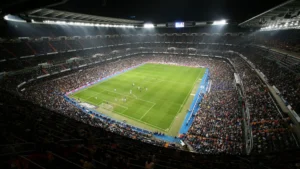
Influence on Spanish Football
The Santiago Bernabéu Stadium is an iconic symbol of Spanish football, not just for Real Madrid fans but for football lovers around the world. The stadium has been the home of Real Madrid since 1947 and has witnessed some of the greatest moments in football history. The stadium’s capacity of 81,044 makes it the largest stadium in Spain and one of the largest in Europe.
The stadium’s influence on Spanish football is undeniable. The club’s success has helped to raise the profile of Spanish football, both domestically and internationally. Real Madrid has won a record 34 La Liga titles and 13 European Cup/UEFA Champions League titles, making it the most successful club in the history of European football.
Global Recognition and Prestige
The Santiago Bernabéu Stadium has become a global icon of football excellence. Its reputation for being the home of the Galácticos, a term coined to describe the club’s policy of signing the world’s best players, has helped to elevate the stadium’s prestige. The Galácticos era saw the likes of Zinedine Zidane, Ronaldo, David Beckham, and Luis Figo grace the pitch at the Santiago Bernabéu, cementing the stadium’s status as the home of football brilliance.
The stadium’s legacy has also been recognized by the football community. In 2007, the Santiago Bernabéu Stadium was awarded the UEFA Elite Stadium status, which is given to stadiums that meet UEFA’s strict criteria for quality and safety. The stadium has also hosted numerous international football matches, including the final of the 1982 FIFA World Cup.
In conclusion, the Santiago Bernabéu Stadium has had a significant cultural impact on Spanish football and has become a global symbol of football excellence. Its legacy is evident in the club’s success and the stadium’s reputation for being the home of the Galácticos.
Cultural Impact and Legacy
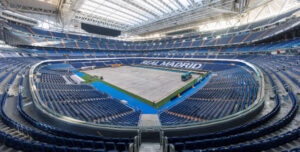
What is the current capacity of the Santiago Bernabéu stadium after its renovation?
The Santiago Bernabéu stadium’s capacity has been reduced to 80,000 seats after its renovation. The new design features a more comfortable seating arrangement, improved sightlines, and a retractable roof that can be opened or closed depending on the weather.
How has the renovation of Santiago Bernabéu stadium transformed its facilities?
The renovation of the Santiago Bernabéu stadium has transformed its facilities into a modern, state-of-the-art facility that offers a world-class experience for fans and visitors. The redesigned stadium includes new restaurants, bars, and VIP lounges, as well as a museum and interactive exhibits that showcase the club’s history and achievements.
What are the most significant architectural features of the Santiago Bernabéu stadium?
The Santiago Bernabéu stadium is known for its iconic design, which features a distinctive, asymmetrical shape and a towering, cantilevered roof that provides shade and shelter for fans. The stadium also includes a massive video screen that spans the length of the pitch and provides fans with a clear view of the action from any seat in the stadium.
How does the cost of Real Madrid’s new stadium compare to other recent stadium projects?
The cost of Real Madrid’s new stadium is estimated to be around €575 million, making it one of the most expensive stadium projects in history. However, the club believes that the investment will pay off in the long run, as the renovated stadium will provide a better fan experience and generate more revenue from ticket sales, sponsorships, and other sources.
What unique experiences does the Santiago Bernabéu offer to visitors?
The Santiago Bernabéu stadium offers a wide range of unique experiences for visitors, including guided tours of the stadium and museum, access to exclusive VIP lounges and restaurants, and the opportunity to watch a match live from some of the best seats in the house.
How does the Santiago Bernabéu’s capacity and facilities compare to Camp Nou?
The Santiago Bernabéu stadium and Camp Nou, home of Barcelona FC, are two of the largest and most iconic football stadiums in the world. While both stadiums have a similar seating capacity, the Santiago Bernabéu offers a more modern and luxurious experience for fans, with state-of-the-art facilities and a range of amenities that are unmatched by any other stadium in the world.
Other Stadiums Articles:
Check Out: Wembley Stadium: Echoes of Glory – A Timeless Icon in London’s Sporting Tapestry
Also Check: Camp Nou: Beholding Barcelona’s Sporting Legacy at a Cathedral of Football Majesty
Also Check: Anfield: Home of Liverpool’s Glorious Legacy – Where Red Dreams Soar
Also See: Unveiling the Magnificence of Moshood Abiola National Stadium: Emblem of Nigerian Splendor
Also see: The Iconic Ellis Park Stadium: A Legacy of Sports and Entertainment in Johannesburg
